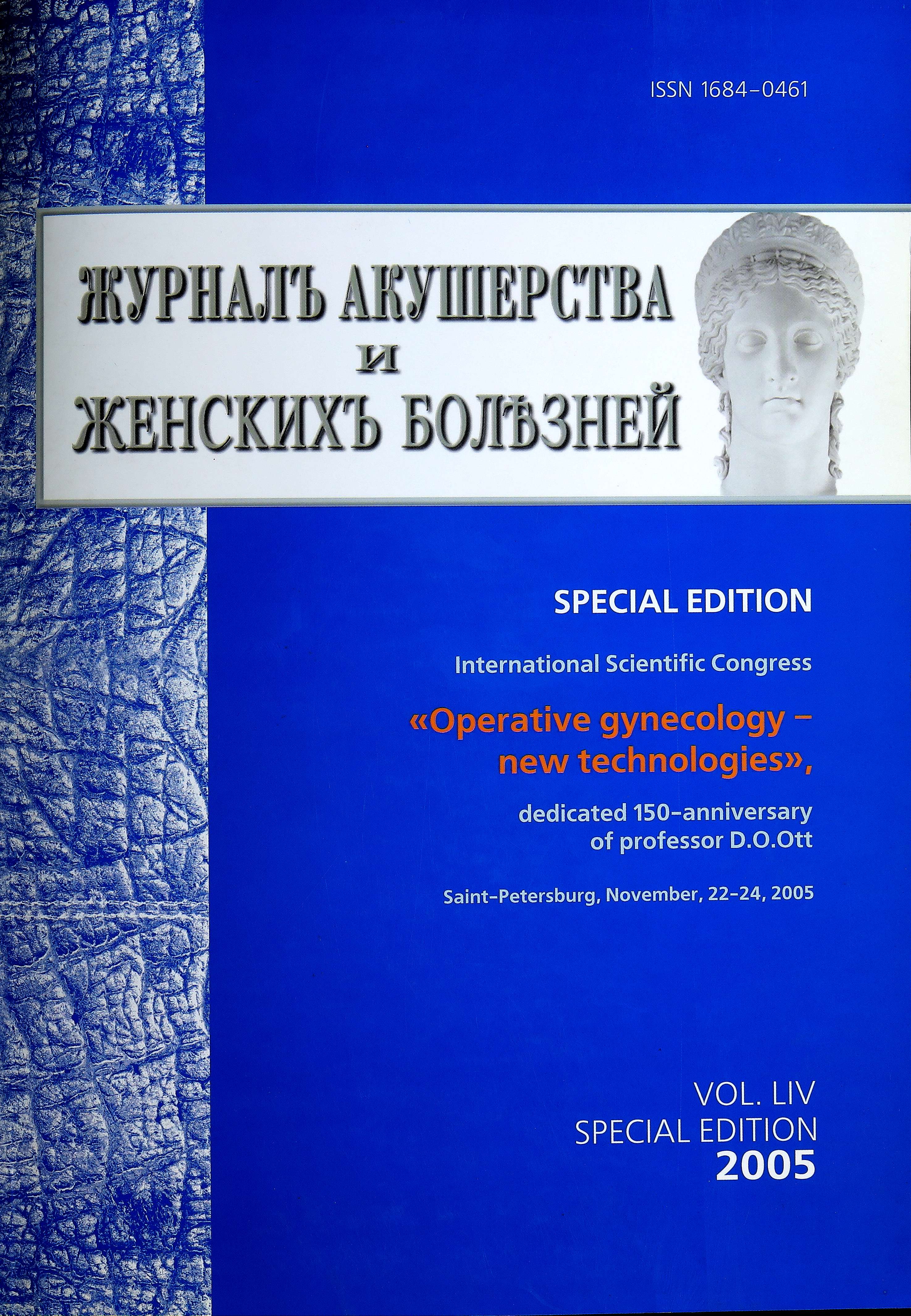Up-to-date approach to diagnosis and treatment of bladder leukoplakia
- Authors: Semenjuk A.A.1, Smirnov D.S.1
-
Affiliations:
- Medical Center 122 of Russian Federation Public Health Ministry
- Issue: Vol 54, No 5S (2005)
- Pages: 77-78
- Section: Reviews
- Submitted: 15.11.2005
- Accepted: 10.11.2021
- Published: 15.11.2005
- URL: https://journals.eco-vector.com/jowd/article/view/87501
- DOI: https://doi.org/10.17816/JOWD87501
- ID: 87501
Cite item
Abstract
Objective: Optimization of diagnosis and treatment of bladder leukoplakia in women.
Full Text
Objective: Optimization of diagnosis and treatment of bladder leukoplakia in women.
Material and methods: 63 women with true bladder leukoplakia revealed in cystoscopy were studied. The morphologic basis of bladder leukoplakia is squamous metaplasia of the transitional epithelium. Three consecutive stages are defined in the development of bladder leukoplasia. Stage 1 is squamous modulation, stage 2 is squamous metaplasia, stage 3 is squamous metaplasia associated with keratonization. Stages 2 and 3 combined form the notion of true leukoplakia the morphologic criteria of which include squamous metaplasia with hyperkeratosis and noninvasive growth (acanthosis). It is those morthological changes that are revealed in cystoscopy as distinctly outlined greyish white or yellowish plaques emerging above the level of the bladder mucous membrane (most commonly in Lieutaud’s trigone). The age of the patients ranged from 25 to 58 years. The commonest complaints included feeling of discomfort in the suprapubic region (76,1), pains and prolonged spasms after urination (65%), pollakiuria (95,2%), urgent incontinence (52,4%), terminal hematuria (7,9%). The duration of the symptoms was from 1 to 6 years. All the patients received from 3 to 6 courses of conservative therapy in the outpatient department, which gave no positive dynamics. When urine microflora was determined, uropathogens of intestinal bacteria group were cultured in a slight concentration in 38.0% of the patients who were given antibacterial therapy. When blood serum was tested for hormones level, the disturbance of the hormonal status - hyperestrogenicity - was detected in 63,5% of cases who were given replacement hormonal therapy. Endovesical multifocal biopsy of the changed sites in the bladder mucous membrane was performed in 37 women, which confirmed the presence of true leukoplakia in all of them. Transurethral resection (TUR) of the changed sites in the bladder mucous membrane was performed in all the patients.
Results: The patients were followed up for 18 months. The feeling of discomfort in the suprapubic region disappeared in 85,0% of the patients, significant decrease of urination frequency was noted in 77,7%, urgent incontinence disappeared in 87,3% and the disappearance of terminal hematuria was observed in 93,6%. No recurrence of leukoplakia was detected in cystoscopy.
Conclusion: Thus, TUR of the bladder wall, accompanied by replacement hormonal therapy when it is indicated, is an effective method of treatment of true bladder leukoplakia.
About the authors
A. A. Semenjuk
Medical Center 122 of Russian Federation Public Health Ministry
Author for correspondence.
Email: info@eco-vector.com
Russian Federation, Saint Petersburg
D. S. Smirnov
Medical Center 122 of Russian Federation Public Health Ministry
Email: info@eco-vector.com
Russian Federation, Saint Petersburg
References
Supplementary files







